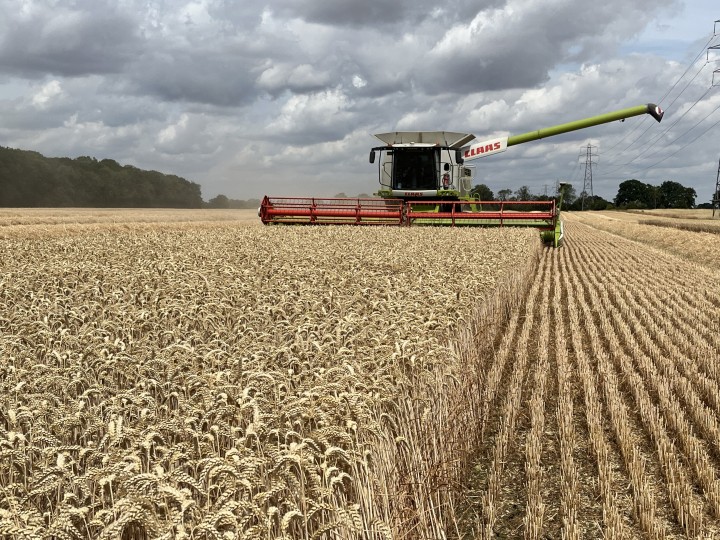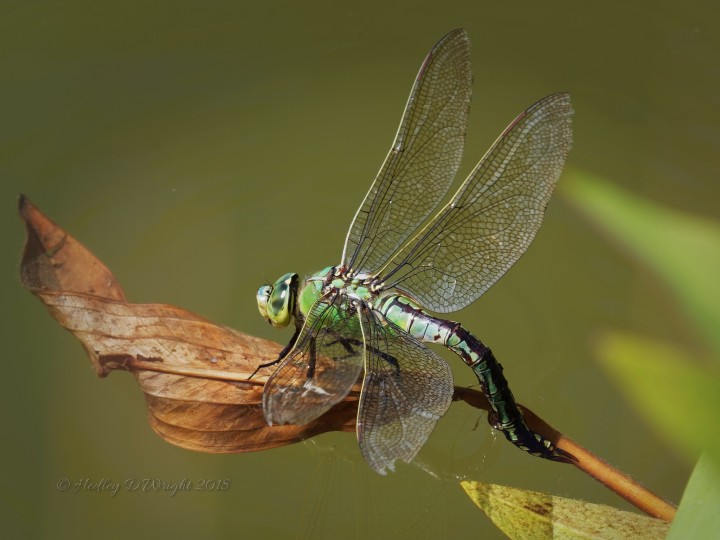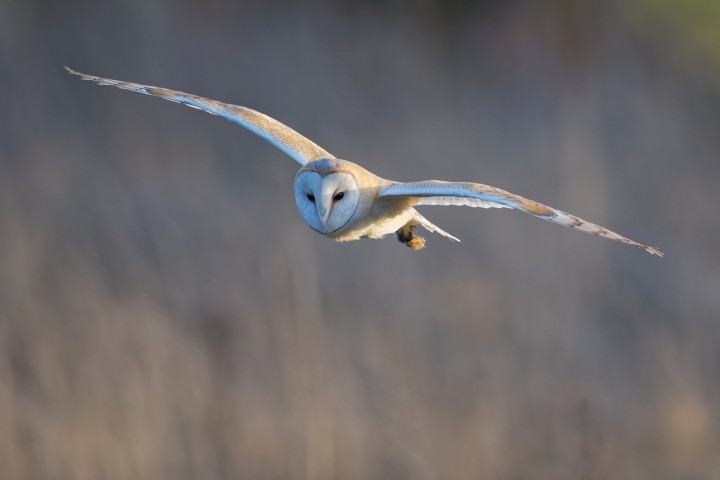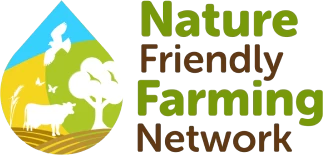In the sprawling landscape of England’s bread basket, Lodge Farm in Westhorpe, Mid Suffolk, is a forward-thinking farm maximising the environmental potential of high-output arable land.

Patrick Barker - Finding balance and turning the tide on nature loss

Our approach is about creating a whole farm ecosystem. It’s an arable system that benefits farm wildlife and farm wildlife that benefits the arable system.
Patrick Barker, Lodge Farm
Lodge Farm, home to the family-owned partnership E J Barkers & Sons, has been run by cousins Brian and Patrick Barker since 2005. After graduating from university, the pair eyed the opportunities for the business’s next steps, bringing fresh ideas to how they could build on their family’s work.
“We sat our dads down and said, ‘Look, we're really serious about taking things on’,” explains Patrick. “We looked at things with quite a critical eye and looked at the things we felt we were doing wrong. We created a bit of a plan, and they were really receptive to that.”
An agricultural epiphany came at the onset of the first round of environmental stewardship schemes. Patrick and Brian saw the Higher Level Stewardship Scheme (HLS), which ran from 2008 to 2017, as a golden opportunity to put their own stamp on the farm.
“We were very conscious that the way we were farming wasn't efficient,” says Patrick. “There were areas of land that didn't grow very well, and we realised these areas were actually ponds that had been filled in since the sixties. We set out to make the farm much more efficient by creating straight lines and taking all the triangles and unproductive land out of production, which formed the base of the stewardship scheme.”

Patrick and Brian walked the farm’s 545ha auditing the landscape for habitats, recording every hedge, pond and scrub, and learning the various species, including those absent or low in numbers. “The HLS scheme set us up brilliantly for everything we’ve done, and we’ve spent those ten years learning how to farm in a way that we felt worked, but also learning about our farm wildlife, and that created the platform and benchmark to get us to where we are now.”
Since the first HLS scheme, Lodge Farm has entered into three concurrent schemes. After the first expired, they joined a Countryside Stewardship (CS) Scheme from 2018 to 2022, which progressed to a second CS scheme running until the end of 2027.
Changing our farm system hasn’t been a stab in the dark. It's been a calculated and well-monitored transition.
Part of their farm’s reinvention story was communicating what they were doing and, most importantly, why. “We very quickly realised if we were taking money from that scheme, from the public purse, we should be showing people what we were doing with that money.”
By 2017, they had hosted over 300 visits for schools, the general public, and farmers. Since then, Patrick has drawn up a program with the local Gislingham Primary School as part of their curriculum for enhanced outdoor learning experiences, covering food production, farm habitats, life cycles of moths and caterpillars, and analysis of Barn Owl pellets.
Strategic Cereal Farm East since November 2017. To date, Brian and Patrick’s trials have included managing lower inputs, cover crops and water quality, quantifying environmental opportunities for marginal land and the impacts of perennial flower strips on biodiversity, both around and within the field.
“The AHDB program has given us a comfort blanket and the confidence that if we get something wrong, someone is recording it and working out what's gone wrong, and we've been able to demonstrate this to other farmers. Changing our farm system hasn’t been a stab in the dark. It's been a calculated and well-monitored transition.”

Two-thirds of the farm is in winter cropping of wheat and oilseed rape, and one-third in spring cropping, including beans, spring barley, oilseed rape and ryegrass which grows as their main break crop. “It’s brilliant for soil structure,” says Patrick. “It’s a two-year ley and adds so much to the root structure of the grass and contributes to our mission around soil health. The oilseed rape and spring beans are also break crops, and they’re important as they bring flowering plants into our rotation.”
Contract mob grazing by a local sheep farmer brings the benefits of animal dung to the soil while reducing their tractor requirements meaning less fuel and fertiliser use. They introduced cover crops with various rooting depths and reduced tillage through direct drilling with flexibility assessed on a case-by-case basis.
“We will always apply the most appropriate form of tillage for the soil and crop conditions. We now have a farming system where we move only the amount of soil we need, whereas historically, we were ploughing the whole farm. I call it the ‘most appropriate tillage to the conditions’ approach, and we're moving four million tonnes less soil every year, and our soil is better for it.”
We're moving four million tonnes less soil every year, and our soil is better for it.
The benefits are reflected in comparable samples showing winter cover crops absorbing residual nitrogen compared to ploughed fields or over winter stubble where it seeps into watercourses. “Water companies spend millions a year diluting those nitrates in drinking water,” reflects Patrick. “Whereas we can fix that at the source through over winter cover cropping and better soil structure so we have cleaner water, and we're not wasting as much nitrogen.”
Their Suffolk clay soil has good water retention for producing crops. Coupled with their farming practices, their overall resilience to extreme weather has improved, mainly during prolonged dry, hot weather.
By changing their systems, Patrick says they are less susceptible to other external shocks, such as fluctuating marketplace prices seen in rising costs of artificial fertilisers. They reduced their fertiliser use by 40% and reduced insecticides with only two applications in the past eight years. “Sometimes, taking a small hit on yield is more cost-effective than spending on chemical sprays. We always try and do as little as we need to rather than what the norm is. It’s about attention to detail and looking at every field for the right reasons. It’s about margin over yield, and it’s about profit over production.”
Since entering their first Higher Level Stewardship Scheme, Patrick and Brian have made excellent progress in wildlife recovery. “Over the course of 10 years, our farm wildlife has rocketed. We made use of every capital grant. We cleaned out and restored all our ponds, reverted land to species-rich wildflower meadows, and planted new hedges.”

As a result, last year’s data results show impressive records, including 310 moth species, 87 bird species and 19 mammal species, alongside healthy numbers of amphibians, hoverflies, butterflies, wasps and other insects. Priority species include Great Crested Newt, Grey Partridge, Yellowhammer, and Linnet. Leaving rough grassland for Short-tailed Vole and putting up nest boxes has provided the ideal habitat for Barn Owls.
“Whilst we have seen the benefits of what we’re doing in increasing the populations of these priority species, we’re also finding new species,” says Patrick. “This year, we have recorded Hazel Dormouse, a first for the farm in generations.”
“We hadn’t had Barn Owls on the farm for as long as I could remember, even before I was born. Then in 2009, Barn Owls started breeding because of the provisions we put in place, and in 2022, we had five pairs nesting, and we fledged ten chicks out of five boxes.”

For Patrick, sensitive management of their 48 kilometres of hedgerows is central to their strategy for providing high-quality forage and shelter for wildlife. “Hedges are so important, and we lose the real value if we don’t manage them correctly. We want variety and diversity because our wildlife responds well to different hedgerows of different species, widths and heights.”
As a keen naturalist, Patrick has an affinity for creating a haven for wildlife, partly out of necessity from a conservation point of view but also for the simple reality that abundant biodiversity underpins a functioning farm ecosystem. “Our farm approach is all about creating balance and a whole farm ecosystem. It’s an arable system that benefits farm wildlife and farm wildlife that benefits the arable system.”
Adopting Integrated Pest Management has helped manage pest burden through flowering margins around and in the middle of arable fields, which support beneficial predatory insects, such as spiders, rove beetles and hoverflies, who travel into the crop-eating aphids and reduce pest damage. “Having a farm with far more insect life, far more beneficial predatory insects, and far more natural habitats creates a whole farming system where everything is much closer to being in balance,” says Patrick.
Our input costs are down, our margins have improved, our yield has maintained, and our overall profitability is higher.
“For me, farming in this way is about four things: business, wildlife, carbon, and people. It's about having a productive farm that makes money and is good for our bank balance. Our input costs are down, our margins have improved, the yield has been maintained, and our overall profitability is higher. This way of farming is also good for wildlife. It's good for our farm's carbon footprint. And it's good for us because we all skip to work every day because we enjoy it. The people who live in the area enjoy it because they see wildlife every time they step outside their door, and they see a historic natural landscape that is looked after and cared for rather than just managed and farmed.”
Looking to the future, how can more farmers gain confidence in shifting their systems towards a whole farm, nature-friendly approach? Most of the change, Patrick thinks, is in government policy and trusted advice, and mindset change will follow. “We've got policy which is in the right place at the moment. We have a far greater emphasis on the natural environment because we know that it's important. As farmers, landowners and land managers, we know we need to give it far more focus, care and attention than we have done for decades.”
“Nature-friendly farming is learning what you can do that works your system. It's challenging conventional agronomy and un-forcing the process,” says Patrick. “The most important thing is open-minded farming and finding the right advice and someone you trust who is on the same wavelength. I think most farms are seeking good advice to help them adapt to the future.”
This isn't about being interested in farming or wildlife; it doesn't mean you should be solely focused on one or the other.
In autumn 2022, Patrick set up the High Suffolk Farm Cluster funded by Nestlé, bringing together 12 farmers across 4,000 hectares. “We’re spending the next 12 months building our baseline for drawing up effective aims and objectives. Once we have all that information, we will look to increase our landscape connectivity, how we can fill the gaps, and how we can provide a landscape-scale approach to everything we do. We’ll look to open this up to many more nature-friendly farmers soon.”
“I think everyone has a real intrinsic love for the countryside in some way, shape or form. It's just finding how we turn that into a way of farming that benefits everything and everyone. This isn't about being interested in farming or wildlife; it doesn't mean you should be solely focused on one or the other. It's about providing a balanced landscape, a balanced business, and supporting people to do it in the right way.”
